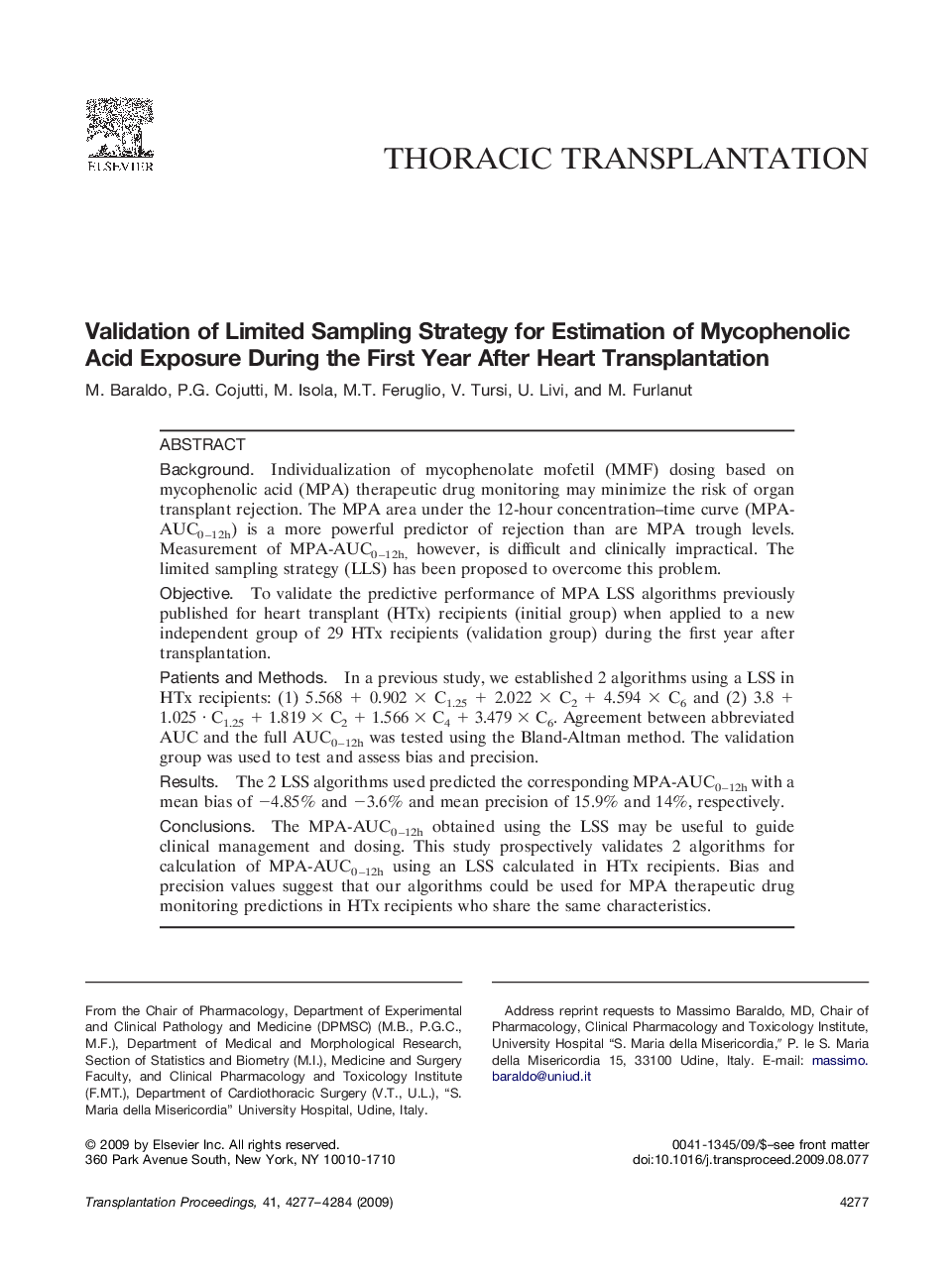| Article ID | Journal | Published Year | Pages | File Type |
|---|---|---|---|---|
| 4258504 | Transplantation Proceedings | 2009 | 8 Pages |
BackgroundIndividualization of mycophenolate mofetil (MMF) dosing based on mycophenolic acid (MPA) therapeutic drug monitoring may minimize the risk of organ transplant rejection. The MPA area under the 12-hour concentration–time curve (MPA-AUC0–12h) is a more powerful predictor of rejection than are MPA trough levels. Measurement of MPA-AUC0–12h, however, is difficult and clinically impractical. The limited sampling strategy (LLS) has been proposed to overcome this problem.ObjectiveTo validate the predictive performance of MPA LSS algorithms previously published for heart transplant (HTx) recipients (initial group) when applied to a new independent group of 29 HTx recipients (validation group) during the first year after transplantation.Patients and MethodsIn a previous study, we established 2 algorithms using a LSS in HTx recipients: (1) 5.568 + 0.902 × C1.25 + 2.022 × C2 + 4.594 × C6 and (2) 3.8 + 1.025 · C1.25 + 1.819 × C2 + 1.566 × C4 + 3.479 × C6. Agreement between abbreviated AUC and the full AUC0–12h was tested using the Bland-Altman method. The validation group was used to test and assess bias and precision.ResultsThe 2 LSS algorithms used predicted the corresponding MPA-AUC0–12h with a mean bias of −4.85% and −3.6% and mean precision of 15.9% and 14%, respectively.ConclusionsThe MPA-AUC0–12h obtained using the LSS may be useful to guide clinical management and dosing. This study prospectively validates 2 algorithms for calculation of MPA-AUC0–12h using an LSS calculated in HTx recipients. Bias and precision values suggest that our algorithms could be used for MPA therapeutic drug monitoring predictions in HTx recipients who share the same characteristics.
